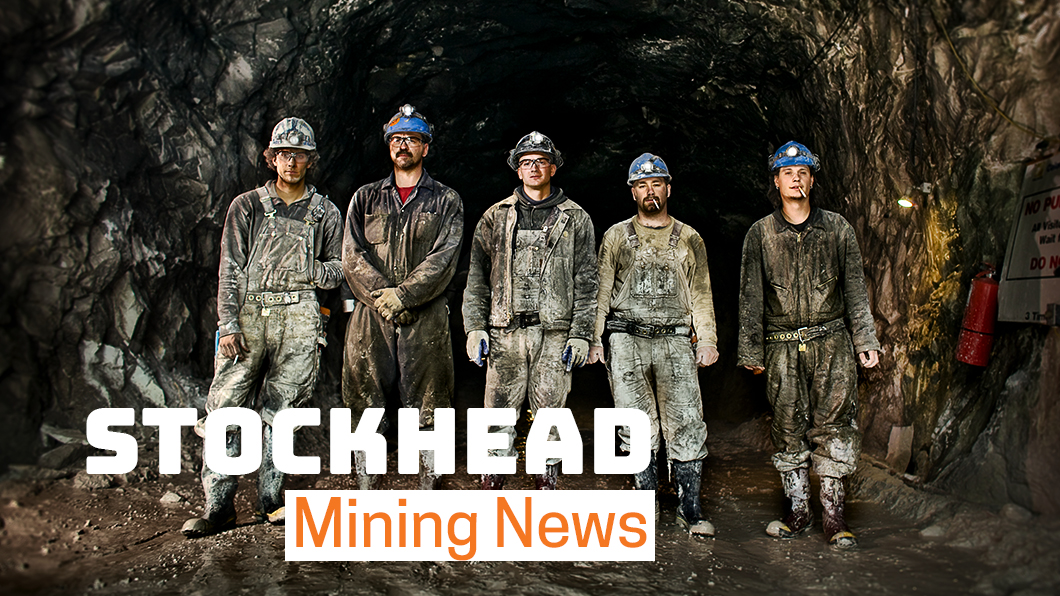As M&A premiums soar, let’s cast our eyes over some of history’s s**ttest mining deals

Pic: Tyler Stableford / Stone via Getty Images
Australia’s big mining stocks are in an enviable position, as solid commodity prices, investment in exploration and a focus on operations and costs have driven them to become cash generators like never before.
For the first time in several commodity cycles miners are now yield plays, with miners like BHP and Rio Tinto choosing to pay out bigger dividends from their growing cash piles.
The question on many investors and analysts’ lips now is whether big miners will begin to invest in growth again, driving the sort of premiums for M&A seen in the 2000s mining boom.
In a way we are starting to see it already, in particular among metals deemed to be ‘battery metals’ like nickel and copper.
Base metals geared towards the decarbonisation narrative are seeing near record prices, or prices not seen in several years, with their scarcity driving a seller’s market for assets.
That has been evident in recent weeks with Sandfire Resources (ASX:SFR) offering almost $2.6 billion for the 100,000tpa MATSA copper complex in Spain’s Iberian Pyrite Belt, a network of three underground mines and a processing facility with a mine life of 12 years ahead of it.
Analysis from Argonaut PCF’s minesonline.com showed the deal was completed on an ore reserve basis of US$0.747/lb, a 131% and 54% premium to the three and five year averages.
South32 (ASX:S32) also splashed up to US$2.05 billion for 45% of the Sierra Gorda copper mine in Chile, while Glencore is known to be shopping its Cobar copper operations.
That is not to mention the pissing contest between BHP and multi-billionaire Andrew Forrest over Canadian nickel tiddler Noront Resources, where a bidding war has driven BHP to offer a 213% premium.
Resources sector littered with a history of bad mining deals
As well-known mining analyst Hedley Widdup noted this month, the closer you are to the peak of the boom the more it feels like it will go on forever.
While it could last for some time to come, this period looms as the industry’s squeaky bum time, where anxious mining companies chasing growth are more likely to drop squillions on deals that in reality don’t move the dial.
It’s an exciting time to be on the sidelines, and even more exciting time to be an investment banker.
But history shows it’s not often a time when companies exercise the best judgment.
Veteran resources analyst and Stockhead contributor Peter Strachan said high profile mergers and acquisitions are rarely as good for the buyer as they are for the seller.
“There are very few actual M&A deals that you can look back on that were actually good for the buyer,” he said.
“They’re often good for the seller, because they get a premium, if the deal is done correctly, but the buyer often overpays and then has to take a long time to digest that acquisition.”
Strachan said the growth in miners’ bank accounts made the current environment undoubtedly a seller’s market.
“What we’re seeing now are the big companies, other than OZ Minerals, with balance sheets bulging in cash burning a hole in their pocket, and they’re just going out looking for growth at any at any price,” he said.
He pointed to IGO (ASX:IGO) as one company Strachan thinks has been profligate with M&A in recent years.
It paid $1.8 billion in shares and cash for the Nova nickel mine in 2015, which now has declining reserves amid limited exploration success and this year sold its 30% stake of the Tropicana gold mine to Regis Resources (ASX:RRL) to fund the $1.9 billion buy of half of Tianqi Lithium’s Greenbushes lithium mine and Kwinana lithium refinery.
“Companies like Independence Group have failed miserably on the exploration front looking for growth and you know doing big deals into the lithium space and then selling their perfectly good gold mine,” Strachan said.
“Then Nova-Bollinger is a fantastic ore body, but the price they paid was well over the top.”
Five mining deals that ended in tears
There are some examples of value-accretive M&A among the big miners – Strachan points to Silver Lake Resources’ (ASX:SLR) merger with Doray Minerals as an example.
These often come at the bottom of the cycle.
In the market we’re currently in, premiums are set to rise, bidding wars are taking off, and the conditions for ill-advised takeovers that destroy shareholder value are ripe.
“Everyday now there’s another acquisition, it’s not necessarily at the corporate level, there might be a project level thing that gets taken up,” Strachan said.
“But there’ll be some stupid money coming into the market now. It’s typical of the top of the clock.”
With that in mind, Stockhead decided to take a look back through history at five big buys that didn’t turn out to plan in a by no means exhaustive list.
Rio Tinto buys Alcan
Price: US$38.1 billion
Rio Tinto still operates assets from the Canadian Alcan business today, and is bullish about the Kitimat Smelter in particular because, unlike the vast bulk of the aluminium industry which is reliant on coal to fire its energy hungry smelters, it uses clean hydropower.
But the 2007 deal that delivered it to Rio was a stinker, with Rio poorly assessing the market’s peak ahead of the Global Financial Crisis and a radical expansion of capacity in China that dramatically lowered the outlook for aluminium prices.
There were a number of red flags. The offer was part of a bidding war, with America’s Alcoa having previously offered US$27 billion in cash and shares, and came in at an absurd 65.5% premium to Alcan’s share price before the Alcoa bid.
Vale was also sniffing around and Rio’s panicked US$101 per share offer plunged the miner into debt, prompting Fitch Ratings to drop its credit rating to negative as the asset sales it promised to service the borrowings never really materialised.
Rio worked its way back through a series of booms in iron ore and copper prices, but misgivings about the premium paid in the Alcan deal lingered for years.
It became apparent over time that Rio’s then-CEO Tom Albanese and the miner’s board badly misread the situation.
Alcan CEO Dick Evans, who got to keep his role as the head of the Alcan business for a couple years after the transaction took place, later described Rio’s gambit in the Wall Street Journal as “(one of the) worst decisions ever, the largest metals and mining transaction in the history of the world at the high point in the commodity cycle.”
Incredibly, despite destroying ~US$27 billion in company value via writedowns on the Alcan transaction, it was hardly the most disastrous deal Rio made during the mining boom.
We’re saving that one for later.
Barrick buys Placer Dome & Equinox Minerals
Price: US$10.4 billion & $US7.3 billion
The Placer Dome deal was the largest gold M&A transaction of all time when Barrick completed the move in 2006, turning the Canadian gold miner into the world’s largest.
It is not commonly remembered as a terrible transaction, but it remains one of enormous missed opportunity for Barrick.
Among the assets Barrick picked up were a swag of Aussie gold mines, including Cowal, Kundana, Kanowna Belle, Granny Smith, Lawlers, Darlot, Plutonic and Henty.
Barrick fell into deep debt on the back of its shopping sprees, selling off the mines for peanuts to Northern Star Resources (ASX:NST), Evolution Mining (ASX:EVN) and Gold Fields, better operators who turned the assets into some of the top performing gold mines in the world.
Case in point – Northern Star bought Kanowna Belle and Kundana for a combined $75 million from Barrick in 2014, generated huge profits for eight years and flipped just the latter to Evolution for $400m this year.
What a heist.
A crestfallen Barrick wound up in one of the world’s longest running and pettiest tax disputes, chasing the WA Government up for $54 million after claiming it was overcharged for stamp duties.
It argued a sizeable portion of the Placer deal comprised not the gold mines themselves but ‘goodwill’, it’s own calculations somehow finding just enough to place it under the threshold to pay stamp duty. Barrick won the case before the WA Supreme Court before suffering defeat on a State appeal to the High Court in Canberra.
What was the context of the debt Barrick had to pay off by conducting a fire sale of its Australian gold mines at the bottom of the market?
That would be its surprise US$7.3 billion purchase in 2011 of Equinox Minerals, owner of the Lumwana copper mine in Zambia. Barrick still operates Lumwana, but only after writing down its value by US$4.2 billion just one year after the purchase.
Copper may be all the rage now, but the deal infuriated investors and analysts at the time who thought they were putting their clients’ money into a pure play gold miner.
Lumwana did nothing for Barrick’s share price and the CEO who spearheaded the deal, Aaron Regent, was let go in 2012 after the flop.
St Barbara buys Allied Gold
Price: $556 million
St Barbara’s plan at the time it merged with Allied Gold in 2012 was to become a “diversified gold producer” with a production profile rising from 260,000 to 435,000ozpa.
That plan did not work out.
The Gold Ridge mine in the Solomon Islands and Simberi operations in Papua New Guinea underperformed, plunging the gold miner into a sea of debt which prompted a series of credit rating downgrades.
While its Simberi operations eventually turned around and became a solid contributor, Gold Ridge was a disaster. It closed after flash floods in 2014, which left contaminated water in its tailings dam.
The value of St Barbara’s shares collapsed from $1.71 when the Allied Gold deal was announced on June 29, 2012, to a low of just 8c in December, 2014.
Gold Ridge was sold to a local company for a reported $100 in 2015. Talk about reopening the mine came and went since.
St Barbara righted the ship under the direction of Bob Vassie, who focused on improving Simberi and maximising the value of the high-grade and low-cost Gwalia operations in WA, wiping out more than $340 million in debt and paying out a first dividend in over 20 years in 2017.
While its performance has wavered in the past couple years, punctuated by a big outlay to buy the Atlantic Gold operations in Canada and issues at both Gwalia and Simberi, St Barbs is in a much better place than it was back in 2014.
BHP blows 20 Bil on shale
Price: US$20 billion
BHP spent a tick under US$20 billion in two deals in 2011 in an effort to gain a foothold in the US onshore shale oil and gas business.
The world’s biggest miner made a big bet on oil at the top of the cycle, bidding US$4.75 billion for Chesapeake Energy’s Fayetteville assets before unloading US$12.1 billion and taking on US$3 billion in debt to acquire Petrohawk and 1 million acres of oil-producing turf across Louisiana and Texas in the Permian Basin.
BHP spent billions more to develop and improve the assets as the oil price tanked, prompting a US$2.8b writedown in 2012 and another US$7.2 billion writedown in 2016.
It sold the suite two years later for just US$10.8 billion.
BP picked up the oil shale projects for the bulk of the divestment while Merit Energy paid just US$300 million for the Fayetteville gas.
BHP’s CEO at the time of the 2011 transaction, Marius Kloppers, described the Shale assets as “Tier 1”, while petroleum chief executive J. Michael Yeager said Petrohawk’s portfolio was “world class”.
Kloppers’ successor Andrew Mackenzie was left to clean up the mess, which played a part in a brief dispute with activist shareholder Elliott Management.
“We acknowledge that the acquisitions that took us into this business were poorly timed, and we paid too high a price,” Mackenzie said at a conference in May 2017. “Early on, the very rapid pace of development was not optimal; it was too quick. We have learned that lesson.”
Rio Tinto buys Riversdale Mining
Price: US$3.7 billion
The piece de resistance when it comes to terrible deals conducted at the top of the cycle, Rio’s acquisition of Riversdale Mining is a cautionary tale about the importance of due diligence.
Not long after writing down billions from the value of the Alcan transaction, Rio used almost US$4 billion of shareholder money to fund this dumpster fire.
Riversdale owned two coking coal projects in Mozambique which Rio believed could provide up to 10% of the world’s supply of the steel making ingredient.
It emerged that not only would the Mozambique government not support the miner’s plan to barge 30Mt of coal down the Zambezi River to port to save on what would have been prohibitive transport costs, but the resource itself wasn’t all it was cracked up to be.
According to claims by the US Securities and Investments Commission, by 2012 Rio’s numbers people were telling management the mines weren’t worth the more than US$3 billion it paid. Actually they were worth negative US$680 million.
As news of the due diligence failings came to light in 2013, Rio head Tom Albanese and CFO Guy Elliott found themselves on the chopping block.
Rio eventually sold the project for just US$50 million, a fraction of the purchase price.
Four years later the executives were charged with fraud by the SEC along with Rio, charges they deny.
“Rio Tinto raised $5.5 billion from U.S. investors, approximately $3 billion of which was raised after May 2012, when executives at Rio Tinto Coal Mozambique had already told Albanese and Elliott that the subsidiary was likely worth negative $680 million,” the SEC said in 2017.
“The complaint alleges Albanese then repeated and reinforced the false positive outlook for the project in public statements.”
Authorities in the UK issued Rio with a £27 million fine and ASIC issued its own charges in 2018. The Australian matter has been fixed for trial in February next year.
The transaction represented a massive payday for Australian resources execs Steve Mallyon and Michael O’Keeffe, the latter of whom moved on to rake in the cash with high grade Canadian iron ore producer Champion Iron (ASX:CIA).
They equally appear to have come out as the winners in a subsequent deal with Gina Rinehart.
The iron ore magnate paid $740 million in 2019 for their successor company Riversdale Resources, which owns the Grassy Mountain coking coal project in Canada.
What seemed like a great proposition to Gina a couple years ago has turned into a headache. That project is located in the environmentally sensitive and iconic Rockies mountain range, and the views of the Canadian Government have soured on coal in recent years.
Rinehart’s people have applied for a judicial review of a ruling from Canada’s Environment Minister and Cabinet that the Alberta project should not proceed on environmental grounds.

UNLOCK INSIGHTS
Discover the untold stories of emerging ASX stocks.
Daily news and expert analysis, it's free to subscribe.
By proceeding, you confirm you understand that we handle personal information in accordance with our Privacy Policy.








